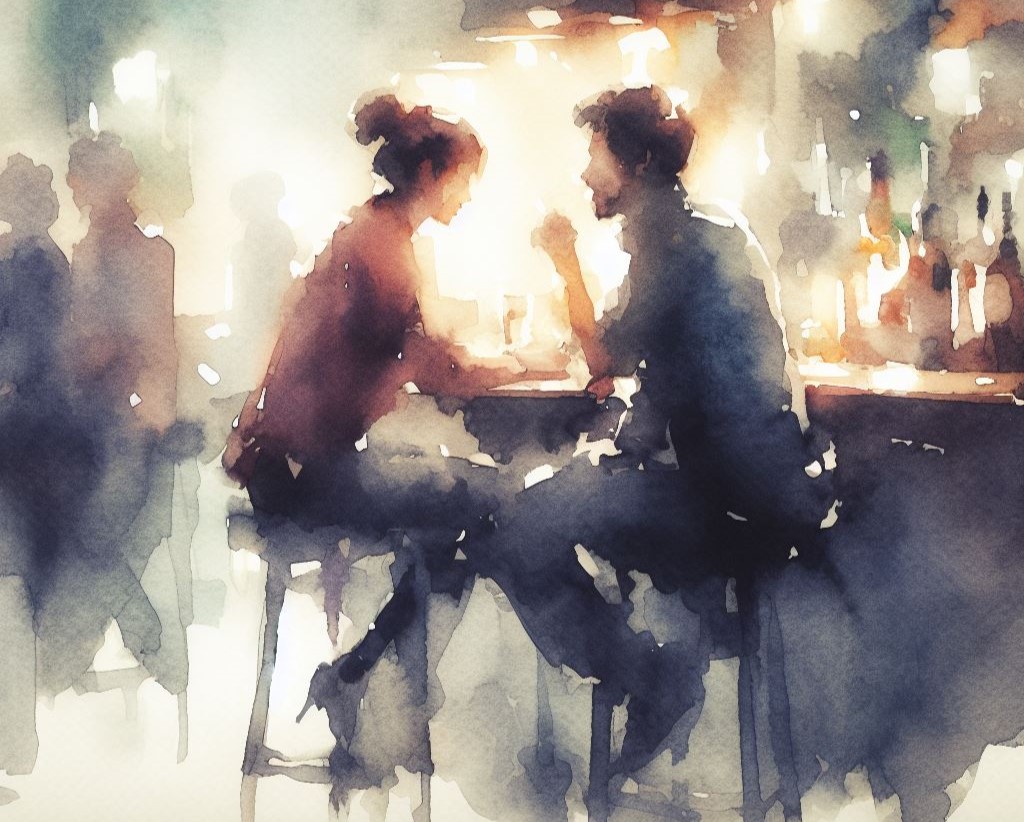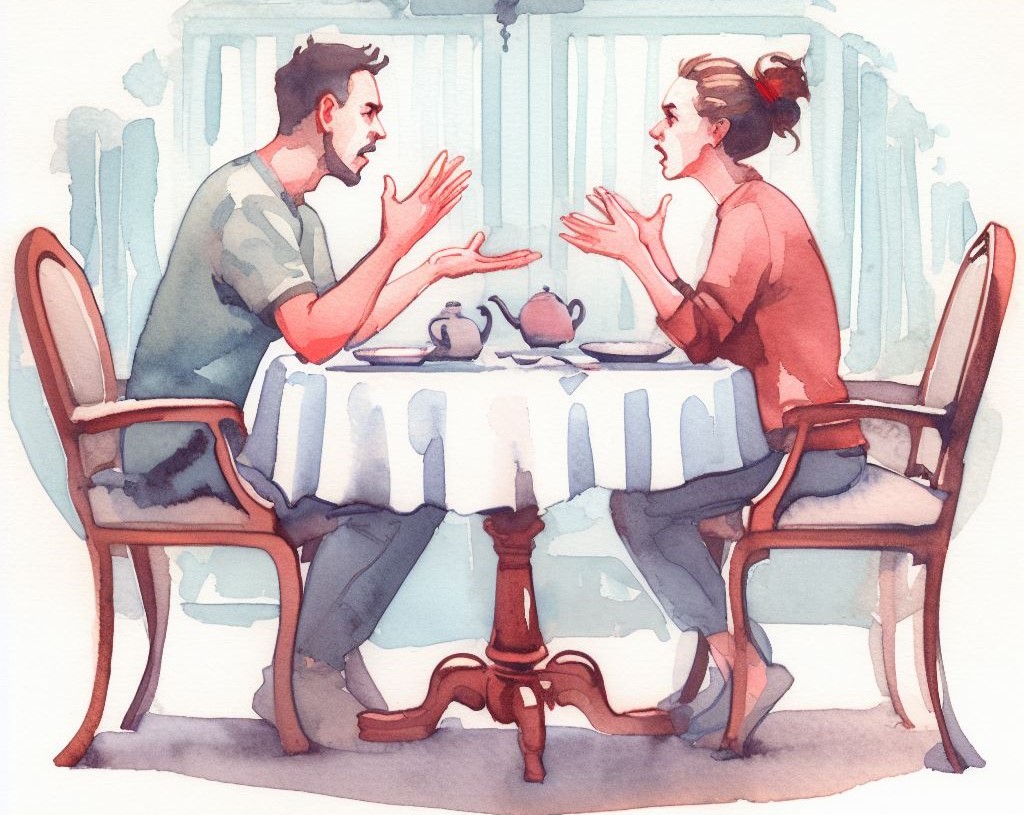Have you ever had someone talk your ear off, and they just wouldn’t stop? To avoid being rude, you signal that you’re not interested in having a chat, but the person doesn’t catch on. This is an example of someone not being calibrated with you because they fail to acknowledge your experience.
When I was young, social skills were something that I could never get a grip on. It took me a lot of practice to actually understand what makes a good interaction. Of course, there’s a lot that goes into it, but I found that your ability to connect with people on an emotional level makes a world of difference to the interaction.
To build deeper connections with people, you need to acknowledge the person’s state of mind and tailor your approach to it. If you don’t, there’s going to be a misalignment between the two of you which is going to resultantly affect the connection. Here we’re going to look at what social calibration is, and how you can create better social connections with it.
The importance of recognizing emotional states

Social calibration refers to your ability to connect on the same wavelength with someone else. It’s a form of social intelligence that involves your ability to understand, empathize, and calibrate your actions to their state of mind.
A person’s mood constantly fluctuates, and you need to tailor your approach to it. If you continue doing something that makes someone uncomfortable without adjusting your behavior, you are not calibrating with them.
Someone who is not calibrated will cross boundaries and provoke unexpected reactions. They struggle to read the social cues and energy levels of others too. The more proficient you are at navigating people, the more you pick up on, which allows you to create better interactions.
Think about it this way. If you walk up to someone who’s in a fit of rage and give them a friendly nudge, they might reciprocate with a punch in the face. Otherwise, if you attempt to have a meaningful conversation with someone who’s in a high-energy state, you’re probably going to bore them to death.
In these particular cases, your approach and the person’s mood are not compatible. There’s a discrepancy. If someone is in a different mood than you, it’s important to adjust your approach to share a more personal connection. When you are able to connect on a more personal level, this opens up all sorts of gateways.
To further improve your social skills, here are some good resources:
- How to Build Rapport With Almost Anyone
- The Conversational Spotlight Technique: How to Win People Over Without Saying a Word
- A Shy Guy’s Guide to Social Competence: Changing Your Beliefs About Socializing
Before getting further into it, here are some questions to think about:
- You see someone at a party standing by herself and looking anxious. How can you help them feel confident around you?
- You make a joke around someone who takes offense. How can you calmly diffuse the situation?
- Your friend looks at their phone when you’re talking about politics. How can you pick up their energy levels?
- There was an argument, and there’s still a lot of tension. How can you clear the air?
- A friend heard some disappointing news and is upset. How can you help her feel better?
- Someone is highly invested in the conversation they’re having with you. How can you maintain that interest?
- Someone is giving you short responses and doesn’t seem too interested in talking to you. What do you do?
- Someone backed off when you gave them a friendly pat on the shoulder. How should you respond?
Why is it good to be socially calibrated?
Being socially calibrated allows you to navigate social interactions much more smoothly. This means that you can read people much better, and respond to them appropriately. Instead of getting slapped in the face when you were expecting to make them laugh, social calibration helps you elicit the responses and behaviors that you intend.
There is no one-size-fits-all approach when it comes to socializing. Every person has a different personality, different interests, and different beliefs. If you treat everyone the same way, you’re going to rub some people the wrong way. That’s why it’s important to take a more individualized approach to socializing so that you create better interactions with people.
Here are some examples of situations where you’re acting in a way where you’re socially calibrated, and in a way where you’re not:
| Situation | Not socially calibrated | Socially calibrated |
|---|---|---|
| You meet someone at a gathering | The person is giving you short responses, not reciprocating questions, and avoiding eye contact with you, but you keep talking to them anyway. | You recognize that they aren’t interested in talking to you, say it was nice to meet them and move on. |
| You make a joke to someone | The person gets insulted because you said something that was inappropriate to them, even though you didn’t intend to. | You recognize their style of humor and decide not to make a joke about that particular subject. |
| You’re on a date | You sit next to the person and she moves her body away from yours. You keep trying to hold her hand or position yourself close to her which makes her feel uncomfortable. | You recognize that the person is still uncomfortable with physical touch, and give her space. You keep the conversation casual and friendly until she shows signs of comfort. |
| You notice that one of your friends in the group seems sad | You talk to him the same way you do as you speak to your other friends. You maintain a high-energy attitude and have fun. | You lower your energy and ask your friend if he’s doing alright. If he opens up, you console him. If not, you give him some space. |
| Someone at work just went through a breakup | You act the same way as you always do by joking with the person, and generally being silly. | You recognize that they may be in a vulnerable state. You make sure you’re kind and gentle with the person. You tell them that you’re here if they need to chat. |
| You notice that someone at a gathering is feeling anxious | You just talk with the other people who are making an effort to chat with you. | You make it easy for the person by introducing yourself, inviting them into the conversation, and asking them questions. |
| A family member gets triggered by something you say | You tell them that they’re overreacting, and that they should lighten up, it’s not that serious. | You don’t react and give the person some space, then move on. |
How to become more socially calibrated

Now that you have an idea of what social calibration is and why it’s important, let’s look at some things that you can do to calibrate more effectively with people during social interactions.
Make people feel understood
Part of what makes social calibration a powerful skill is that it makes people feel understood. If someone is feeling pretty down, you can recognize the signs and act accordingly. By being calibrated you might console the person, lift them up, or spend some time holding space for them.
If someone is embarrassed, you’ll recognize that they’re embarrassed and make sure that you don’t point attention toward it. make sure that the person you’re talking with feels understood by you, and it will go a long way.
Know where people’s boundaries lie
Recognizing boundaries is important if you want to improve your social intelligence. A personal boundary is the point where an action would make them feel uncomfortable. People have different boundaries, as everyone is comfortable with different things.
Learn to recognize what the person you’re interacting with is comfortable with. Maybe certain jokes, gestures, or behaviors make the person feel uncomfortable, and you need to be able to identify when they’re uncomfortable. Learning boundaries is especially important on dates, to act in a way that makes the person feel comfortable. So keep mental notes on where these boundaries are.
Read the social cues
Your ability to socially calibrate relies on reading social cues. Social cues are nonverbal signals that convey a particular piece of information. They come in the form of body language, mannerisms, tone of voice, and expressions. Acting on social cues allows you to navigate social interactions better as they give you green and red lights for certain behaviors.
There are always social cues to pick up which indicate important information about that person. If they look irritated, they likely aren’t in the mood to meet you. If they’re holding eye contact and asking you questions, then they are likely interested in getting to know you. Take note of the nonverbal signals. Are they telling you to keep going, or to stop?
Pay attention to the person’s body language
Body language is generally a bright display of how the person is currently feeling. Respond to the person’s body language over what they say. A person’s body language is generally a more accurate display of what they’re actually feeling because it’s unconscious, and calibrated with their state of mind. You won’t see someone who is withdrawn and on high alert if they’re feeling confident.
If the person faces away from you when you start talking to them, they’re signaling that they don’t really want to be talking to you. If they appear confident while smiling and laughing, it’s probably a good sign to continue the conversation. Otherwise, if the person is a bit tense, maybe ease off a little bit and take a softer approach. What is their body language telling you?
Pay attention to people’s emotions
Your aim is to work with the person’s personality and mood, rather than forcing your own onto them. People will not respect you if you can’t show any flexibility, and you’re probably going to cause friction with people who are very different from you.
You can tell when someone is visibly upset, angry, resentful, jealous, or feeling shame. You need to tailor your behaviors around those emotions and respond to the way they’re feeling rather than forcing your own personality and style onto them.
Get a grasp of their humor style
Everyone has a different style of humor, and understanding people’s humor styles is a sign of social intelligence. Therefore, pay attention to what makes people laugh, and what comes across as awkward or offensive. Say jokes that you know won’t offend people, and ideally jokes that won’t be completely dismissed either.
If you don’t learn other people’s style of humor, you might make a lot of jokes that they don’t understand, or potentially come across as insensitive. It’s also important to recognize how people generally respond to your jokes. If nobody laughs at your jokes, then you should really stop making them. If you get a good response, then make more jokes like it.
Be observant
You need to be observant when you’re interacting with people. Keeping an eye on how other people react and what they respond well to is important if you want to create a good connection with them. Therefore pay attention to what the person is doing, how they respond, and what they say.
Avoiding clashes in interests and beliefs

A friend of mine is a very spiritual person, but he is all gas and has no breaks. A store clerk would ask how his day was going, and he would use it as a bridge to talk about the energy of the land. Another friend has no hesitation about discussing the globalist elites controlling the human race, or finding a way to work it into the conversation, regardless of who it’s with.
There is nothing wrong with their beliefs. I actually like having those sorts of conversations, but not all conversations are suitable for every person. Everyone has unique belief systems, perceptions, and understandings of the world. To think that everyone shares your curiosity about any given topic is misled.
I have some pretty strong views on certain topics too, whether they’re political, spiritual, or philosophical. I’m always willing to have a discussion, but those discussions aren’t my default setting. My default setting is to have a casual chat with people. I like to get a feel for who they are and what their interests are before going into my interests.
Navigating a person’s interests is an essential leg of social calibration. Get to know the person’s interests and beliefs before jumping into anything of a sensitive nature. Usually, you can get a feel for what sorts of discussions the person enjoys having, and what you should avoid.
If you’re not sure, you can touch on a topic and see how they respond. If they seem interested and ask questions, then by all means go right in. But if you get any negative reaction or the person seems uninterested, then steer the conversation in a different direction.
All interactions can be navigated in a way to avoid conflicts. But if you do get into a conflict with someone, it’s important not to fight back and get triggered yourself. For more about resolving conflicts in a skillful way, follow the link below:
Connect over mutual interests
The purpose of small talk is to probe the person’s interests. You want to find out what things they’re interested in, and what topics you can both connect over. This is how you calibrate with someone, by finding common ground.
Naturally, you won’t connect over everything. Some more niche interests they might not care about at all. If someone talks to me about football, I have no knowledge or interest in having that discussion, so there’s really nothing to connect over. If I talk to that person about shamanic traditions, they probably feel the same way.
That’s why it’s important to find out the topics that you both have a mutual interest in and discuss that. If you mention something about gaming, and the other person has a lot of knowledge about it too, then you have calibrated on a similar interest.
Reading the set and setting

Every place has a collective energy, and it’s just as important to calibrate with that energy, as it is to the energy of a single person. You can recognize this as the vibe of a place, and understand what is appropriate within that environment.
Bars and nightclubs are going to have a different energy to a library or office. If you act like you would at a festival when you’re in the office, you’re probably going to get fired. If you act like you’re at the office when you’re at a festival, you’re going to seem like a downer to other people.
Think about the common purpose that people go to any given place. Do people go to celebrate? Do they go to work or study? Do they go there to worship, or perhaps mourn? Maybe they go to just relax a little where they don’t want to be disturbed. Maybe they wouldn’t be there if they didn’t want to meet people. See how the setting changes things?
If you’re at an event such as a funeral, the energy is going to be quite low. It’s not the best place to be in a festive mood or to want to celebrate. A gallery is generally going to be more of a formal setting. Your etiquette is going to change. You might find yourself chatting about art and philosophy and having conversations of a different nature.
So match the collective energy of the environment. If you’re an outlier it’s going to be much harder for you to connect. It’s important to calibrate with the set and consider how other people are acting inside it.
What is socially acceptable?
Think about what sort of behaviors are socially acceptable in any given setting. Swearing and laughing loudly with your friends is more acceptable at a bar than at a restaurant where there are families listening to you.
Part of being socially calibrated is to respect other people. So ask yourself, what is socially acceptable where you are? What would be rude to other people? Make sure that your behavior is in alignment with the setting to avoid issues, or being disrespectful.
When you acknowledge the set and setting, while paying attention to the individuals within that environment, this helps you read between the lines and create interactions that are much more meaningful.

